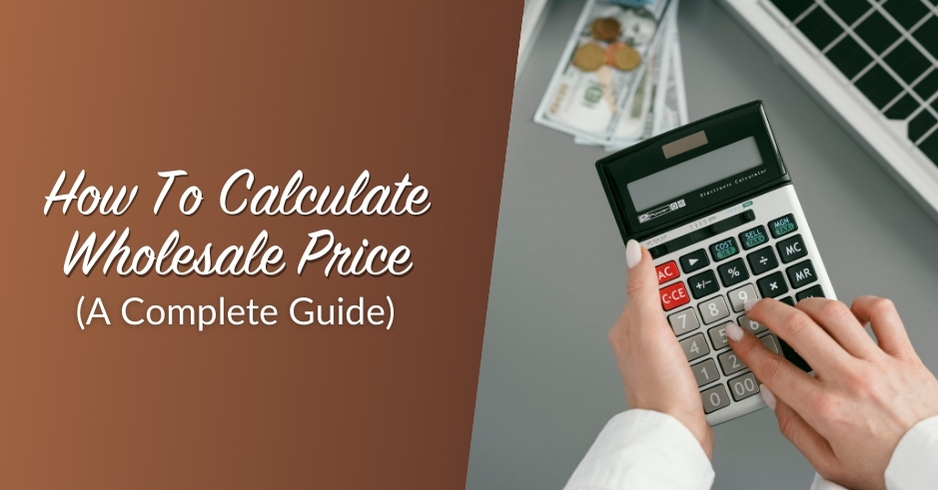
Are you a retailer who’s considering selling your goods in bulk? Are you unsure how to set the wholesale price on your items? Whatever your current situation, setting the right wholesale price is easy enough once you have the right formula and approach, which we will discuss in this article.
There are big differences you need to know about wholesale price vs retail price, but first, understand that there’s no one-size-fits-all solution to your pricing concerns. After all, pricing strategy depends on your business’s nature and current and future situation. Obviously, you need to price your goods before you can sell them, but you’ll need to determine your wholesale prices in a way that’ll earn you a hefty profit.
This article will help you choose the right pricing model strategy to set wholesale prices for your products. We’ll also give you a free wholesale price calculator to help you calculate wholesale prices with ease! So, let’s dive right in!
Table of Contents:
- What Is Wholesale Price?
- 4 Strategies Businesses Can Use To Calculate Wholesale Prices
- 4 Factors To Evaluate When Deciding On A Wholesale Pricing Strategy
- How To Calculate Your Wholesale Price Formula (Free Tool)
- Common Mistakes Store Owners Make When Setting Wholesale Prices
- Getting The Most Out Of Wholesale Suite
- Frequently Asked Questions
- Does "wholesale" mean cheap?
- What is the difference between wholesale price vs. retail price?
- Is the wholesale price half of the retail price?
- What is the minimum advertised price?
- How can I monitor the impact of my wholesale rate pricing strategy on customer satisfaction?
- Should I offer different tiers for wholesale prices?
- Related Articles
- Conclusion
What Is Wholesale Price?
Wholesale price, or wholesale rate, is the price set for products sold in larger quantities to businesses or individuals who intend to resell them. Wholesale prices allow businesses to acquire products at a lower cost, which they then resell to consumers at a higher price to generate profit.

Setting the right wholesale prices for your business is crucial as it can directly impact your profitability and business sustainability. By implementing strategic wholesale prices, you ensure that your costs are adequately covered and that you maintain a healthy profit margin.
Furthermore, setting the right wholesale prices enables you to attract more customers, build stronger connections with your existing wholesale customer base, and remain competitive in your industry.
If you want to set wholesale rates for your online store, we suggest downloading and installing the free wholesale prices plugin. This WooCommerce plugin sets the wholesale prices for your entire product range that only registered wholesale customers can see and access.
4 Strategies Businesses Can Use To Calculate Wholesale Prices
We’re here to help you set wholesale prices that drive profits for your business! In this section, we share four strategies you can explore to determine the most suitable wholesale prices for your offered products.
1. Calculating wholesale price using cost-based pricing
Cost-based wholesale pricing is a strategy where a business sets the price of a product based on the cost of manufacturing or acquiring that product, plus a markup. Typically, it takes the following factors into account:
- Cost of materials (raw materials, tools)
- Labor expenses
- Overhead expenses
- Profit margin
This strategy provides a mathematically ideal approach to determining wholesale prices and protecting profit margins. By factoring in all the expenses associated with the production of goods, you can calculate the wholesale rate using this formula:
Wholesale Price = Cost of Materials + (Labour Invested x How Much You Value Time) + Other Overheads (Rent, Fixed Costs, Electricity, Etc.) + Profit Margin
Aeolidia suggests a slight tweak to this concept that lets you calculate both wholesale price and retail price:
When planning your pricing, you must first develop a wholesale price that pays you for your time, labor, materials, overhead, employees, etc. This price should have profit built into it so that you can stay afloat and grow your business. Once you’ve set your wholesale price, double that price to create your suggested retail price. When selling the product on an e-commerce site, use that retail price yourself.
Is cost-based pricing right for your business?
Using cost-based pricing can help ensure that all expenses are accounted for, protecting your profit margins. Most experts recommend using this pricing model strategy to factor in all expenses and then mark up that price by a certain percentage to arrive at your final selling price.
However, this wholesale pricing formula can also have some drawbacks. For example, it does not take into account market conditions or competition. So, you may find out that competitors may be charging less for similar products.
Additionally, cost-based wholesale pricing may not allow for flexibility in pricing. If your manufacturing or overhead costs change, the product’s price will also need to change to reflect those expenses. Otherwise, you risk operating at a loss.
Lastly, this method doesn’t consider buyer sentiment, which can be a huge problem. After all, the market’s perception of your products’ worth can be an essential factor in calculating wholesale prices.
2. Calculating wholesale price using guesswork pricing
Guesswork wholesale pricing is when you set the price of a product based on what the competition is charging for similar items. As you can probably tell, this strategy does not rely on a specific formula, but rather on the business owner’s or marketing team’s judgment.
For example, you might work out the average retail price of your competitors. Then, you can establish a desired profit margin on your wholesale products (e.g., 40%) and price your items accordingly:
Because this pricing model strategy involves a certain level of estimation rather than a precise calculation, we call it “guesswork pricing.”
Is guesswork pricing right for your business?
This wholesale pricing strategy gives you more flexibility than the previous method. You can adjust prices based on market trends and respond quickly to changes in demand. This can be particularly beneficial in fast-moving markets where prices are constantly shifting.
Moreover, guesswork wholesale pricing can consider factors that are not easily quantifiable, such as brand reputation or customer loyalty. These factors can significantly impact the perceived value of a product and may determine the price that customers are willing to pay.
However, it can be challenging to predict a competitive price, and you may end up overpricing or underpricing your products. This can lead to lost sales or decreased profits.
Additionally, guesswork wholesale pricing may not be as transparent as other strategies. Since it does not rely on any formula or manufacturing costs, customers may struggle to understand the reasoning behind the price.
So, are there any other options?
As mentioned in the introduction, pricing is subjective. However, this has nothing to do with your subjectiveness as the business owner, but with the customers’. Therefore, when determining a price for a product for sale (retail or wholesale), we recommend using what’s often referred to as “value-based pricing”, which we discuss in detail in the next section.
3. Calculating wholesale price using value-based pricing
If you opt for value-based wholesale pricing, the focus is on the value your product provides customers, rather than the cost of producing it. You’ll need to determine the perceived value that people place on your product and set the price accordingly.
This may involve collecting customer feedback, conducting market research, and auditing your competitors. However, you’ll also need to consider production costs. Ideally, the final wholesale rate should be twice as much as the cost of production:
Value-based pricing aims to establish a pricing strategy that optimizes profitability while delivering perceived value to customers.
However, before you use value-based pricing to determine your wholesale prices, we highly recommend positioning said product somewhere in the top third of the market. This allows for more significant profit margins and flexibility when discounting prices later. The only time not to employ this strategy is when the top third of the market is already oversaturated with other businesses trying to do the same thing.
So, with that in mind, here are the steps you must take to use value-based pricing.
1. Gather customer feedback
Customer feedback is essential in determining wholesale rates. Therefore, allow real consumers to experience your product first-hand. Place significant emphasis on understanding how to enhance the perceived quality of your product. Remember: higher quality often means higher prices and improved profit margins.
2. Audit the competition
Then, conduct a thorough market survey and put all the data you’ve gathered about your competitors in a spreadsheet. Create a graph that shows where each competing product sits price-wise in the market, from lowest to highest.
Assess the “value” positioning of competing products on the graph, which can help you make further comparisons. Determine whether they’re positioned in the high-value or commodity segment and whether they’re targeting up-market or down-market.
Based on your understanding of the overall market, develop an initial pricing estimate by considering the value of your product.
While we recommend aiming for the top third as it offers greater flexibility, the pricing strategy remains subjective. Your approach may involve positioning your product as a more affordable commodity, so consider incorporating this into your pricing considerations.
By the end of this step, you should have a rough price range for your product.
3. Cross-check against the cost of production
While value-based pricing is influenced by market perception and perceived value, it is important to balance it with business sensibility. Verify that your pricing covers the cost of production to ensure a reasonable profit margin.
If necessary, you can use the cost-based formula to work backward and establish the minimum price required to cover production costs. Assess the viability of the price you’re considering.
Ideally, your price should be around double the cost of production. If the market allows for a higher price, that would be even more advantageous.
However, this will depend on your business, your desired market positioning, and your ability to cost-effectively bring the product to market.
Also, keep in mind that pricing below double the cost of production may prove challenging to sustain. Therefore, explore opportunities to reduce costs or enhance perceived value to address this issue.
4. Formulate your wholesale price
When catering to wholesale customers, it’s crucial to offer substantial discounts that also allow them to generate profits. Therefore, ensure you offer a great deal that will be a win for your wholesale customers.
However, at the end of the day, you’re in this business to make money. Thus, your pricing structure must include profit margins, even at the wholesale price point.
With a retail price set at 2 to 4 times the cost of production, there is ample room to support the wholesale business.
We recommend setting a wholesale price around 40% off the retail price if possible. This allows both you and your wholesale customers to have up to 30% off the retail price, which you can use for promotional activities.
If you’re considering having multiple levels of wholesale, avoid exceeding a 50% discount off the retail price. Additionally, ensure that you have minimum order quantities in place to effectively cover unit costs, fixed operating expenses, and labor costs.
Is value-based pricing right for your business?
Value-based pricing can be an effective pricing model for determining your wholesale rates. Since this strategy factors in the value your customers place on your products, you can set wholesale rates that resonate with their expectations, which can lead to increased customer satisfaction and loyalty.
While this is the case, it’s critical to consider if it aligns with your business goals and available resources. Implementing a value-based approach will require in-depth customer research and analysis of their perceived value. Continuous market monitoring can also be required to ensure your pricing remains competitive.
Ultimately, value-based pricing can provide opportunities for differentiation and customer-centric pricing, but it’s essential to factor in the complexity and resources required to ensure its long-term effectiveness.
4. Calculating wholesale price using simplified wholesale pricing
Simplified wholesale pricing means setting fixed wholesale prices for your product range. There is a rationale behind this approach, which we’ll explore as we explore the benefits of implementing a simplified wholesale rate across your products.
If you’re offering tiered or volume-based pricing, where the wholesale rate decreases as bulk purchases grow larger, you should make the wholesale pricing as simple as possible so that it is comprehensible to everyone involved.
According to the NYTimes, simplified pricing aims to eliminate the markdown system buyers have confronted for years. With it, retailers seek to re-establish credibility in the wake of a former practice of sales versus regular prices.
Is simplified wholesale pricing right for your business?
Using simplified wholesale pricing offers several advantages. Firstly, it reduces the complexity for business owners by establishing consistent wholesale prices across product offerings. This makes it more transparent and easier for your wholesale buyers, as you utilize just one pricing method.
Secondly, it simplifies accounting and inventory management for your business, helping you streamline your operations. Lastly, it gives you immense flexibility when offering special deals and promotions. Consistent pricing across your product categories allows you to offer site-wide discounts and set discount tiers for wholesale customers.
4 Factors To Evaluate When Deciding On A Wholesale Pricing Strategy
By now, we’ve explored four pricing strategies you can use to calculate wholesale prices, each with its advantages and drawbacks. However, if you’re still undecided about which approach suits your business best, we’ve provided additional considerations to help you make an informed decision.
Below, we discuss key factors to consider when choosing the right wholesale pricing strategy for your business.
1. Business goals
Are you looking to maximize profit, build long-term customer relationships, or expand into a new market? No matter what your business goals are, your wholesale prices must align with your intended outcomes.
For instance, if your primary objective is to enter new markets or expand your wholesale customer base, a pricing strategy that focuses on competitive pricing may be more effective. This entails setting wholesale rates that are more favorable than those of your competitors.
On the other hand, if your priority is building long-term customer loyalty, you’ll want to offer a customized wholesale pricing strategy that incentivizes repeat purchases. This may include implementing volume-based discounts or offering tailored discounts for loyal customers.
2. Expenses and profitability
When determining the best wholesale rate for your business, it is crucial to evaluate your current cost structure and desired profit margin. Start by analyzing the overall cost of bringing your product to market and determining the minimum price you need to cover these costs. Your pricing strategy should cover these expenses and allow you to gain a reasonable profit that can support sustainable business growth.
Then, consider how different pricing strategies may impact your desired profitability. For instance, implementing cost-based pricing can allow you to cover your costs while maintaining a profit margin. On the other hand, value-based pricing can allow you to capitalize on your product’s perceived value and potentially set higher price points for maximum profitability.
Balance is key– you’ll want to ensure that your chosen strategy aligns with your cost structure and gives you a profit margin to support your business objectives. Lastly, regularly reevaluate your pricing strategy to ensure it remains aligned with your goals and current market conditions.
3. Customer preferences and behavior
Understanding your wholesale customers’ preferences, customer sentiment insights, price sensitivity, and purchase behavior can help you choose the right pricing approach. For example, some customers may be highly price-conscious, while others may be more willing to pay a premium for superior-quality products.
Here’s another example of how knowing your customers’ buying behavior can help you identify the right pricing approach.

For instance, if your wholesale customers prefer placing frequent, large-volume orders rather than occasional but more substantial purchases, you can structure your pricing to offer volume-based discounts to encourage them to increase their order sizes.
Consider conducting thorough market research and gathering feedback to gain customer insights. You can use interviews, surveys, or focus groups to learn more about their behavior and preferences.
4. Competitive landscape
It is also helpful to assess the competitive landscape in your niche to identify how implementing different pricing strategies can give you a competitive edge. Assess your competitors’ pricing models. What pricing structures, discounts, or promotions are they running to attract customers?
Think about how you want your business to be perceived compared to your competitors. For example, you may focus on providing faster delivery times or exceptional customer support to justify your wholesale prices. Ultimately, the goal is not to copy your competitors’ strategies but to discover opportunities to differentiate your business.
How To Calculate Your Wholesale Price Formula (Free Tool)
Whichever strategy you choose, you’ll want to get it right. However, calculating the wholesale rate can be challenging, especially if you struggle with maths! Fortunately, our free wholesale price calculator can do all the work for you:
To get started, enter your name and email address. Once you’ve successfully registered, you can access the calculator:
This will take you to a spreadsheet that contains the three wholesale price formulas discussed in this post. We recommend that you make a copy of the document before you start using it:
Then, simply choose your preferred pricing method and start entering your numbers. For example, using the cost-based wholesale price formula, you’ll need to enter the materials cost per unit, time value per hour, and other expenses.
Our calculator will then give you a suggested wholesale price based on those figures. We recommend that you experiment with different formulas to choose the one that best fits your needs.
Common Mistakes Store Owners Make When Setting Wholesale Prices
Setting up wholesale prices in your store isn’t just about picking a lower number than your retail price. There’s a bit more to it if you want to keep your margins healthy and your wholesale customers happy. Here are five common mistakes store owners make, and how you can avoid them:
1. Setting the same discount for every product
Not all products are created equal. Some have higher margins, while others are already priced tightly. Applying the same flat discount (like 30% off everything) across your entire catalog might work in the short term, but it can lead to lost profits or even selling at a loss on certain items.
💡Tip: Use flexible wholesale pricing tools in WooCommerce to create category-based or product-specific discounts. This way, your pricing better reflects your actual costs and margins.
You may also read: When And How To Start Offering Discounts To Customers.
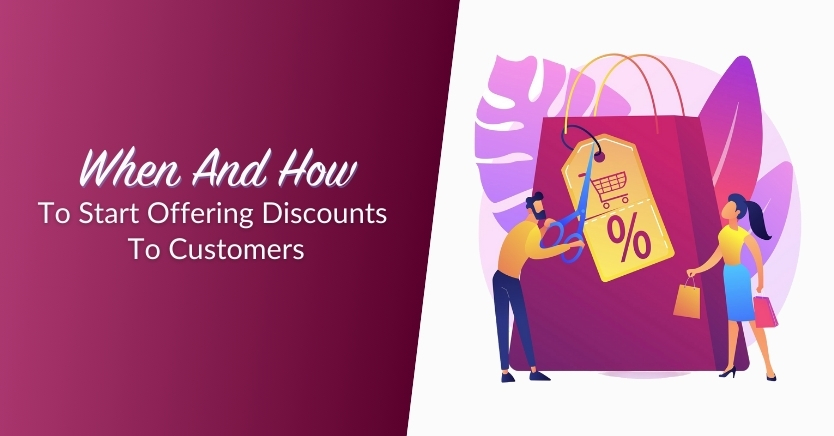
2. Forgetting to factor in hidden costs
Wholesale prices should always consider more than just your product cost. Packaging, shipping, transaction fees, and even time spent managing orders can eat your profits if not included in your calculations.
💡Tip: Always do a full cost breakdown before setting a price. If needed, build in a small buffer to cover hidden expenses that are often overlooked.
3. Ignoring the order quantity when pricing
Wholesale pricing works best when it rewards buyers for purchasing in bulk. If you offer wholesale access but don’t tie it to minimum quantities or volume-based discounts, you might attract buyers who expect low prices without making big orders.
💡Tip: In WooCommerce, set minimum purchase quantities or use tiered pricing rules. This way, your wholesale discounts are tied to real bulk orders—just as they should be.
4. Not reviewing prices regularly
Markets change, costs go up, and competitors adjust their prices constantly. If you set your wholesale pricing once and forget about it, you might undercharge without realizing it.
💡Tip: Review your wholesale pricing every few months. Compare your costs, track your margins, and adjust prices when needed to keep everything profitable.
5. Overcomplicating the pricing structure
While building a super detailed pricing table with loads of rules and exceptions is tempting, this can quickly confuse you and your wholesale buyers. If customers can’t understand your pricing, or if you constantly have to explain it, they’re more likely to leave.
💡Tip: Keep it simple. Use tools that let you set clear pricing rules, visible discounts, and clean displays on your WooCommerce store. When pricing is easy to understand, everyone wins.
You may also read: Simple Tiered Pricing Examples And How To Use Them.
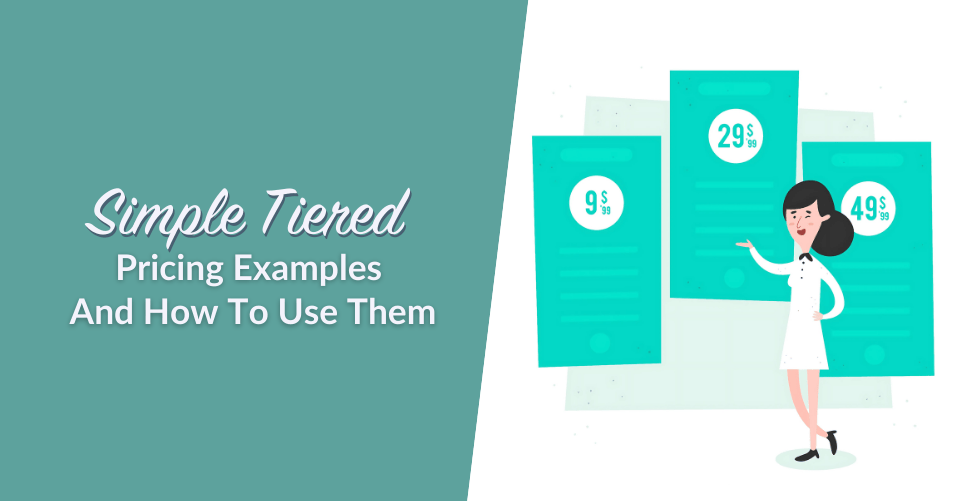
Getting The Most Out Of Wholesale Suite
One of the most effective ways to implement wholesale pricing is to use Wholesale Prices Premium. This plugin enables you to set up wholesale prices effortlessly and offers different price levels based on bulk purchase quantities. By tailoring wholesale prices to different customer groups, you can attract more buyers, encourage larger orders, and increase overall sales for your store.
Wholesale Prices Premium is part of a toolkit offered by Wholesale Suite. It also includes tools like Wholesale Order Form, which helps customers place orders quickly and efficiently. Wholesale Lead Capture helps online stores acquire and manage potential wholesale customers. Lastly, Wholesale Payments makes it easier for you to manage payment options.
These tools offer a comprehensive solution for managing every aspect of your wholesale business. From attracting customers to processing orders and handling payments, they simplify operations, improve efficiency, and create a seamless experience for you and your customers.
You may also read: Set Up Minimum Subtotal Price In WooCommerce (Easy Steps).
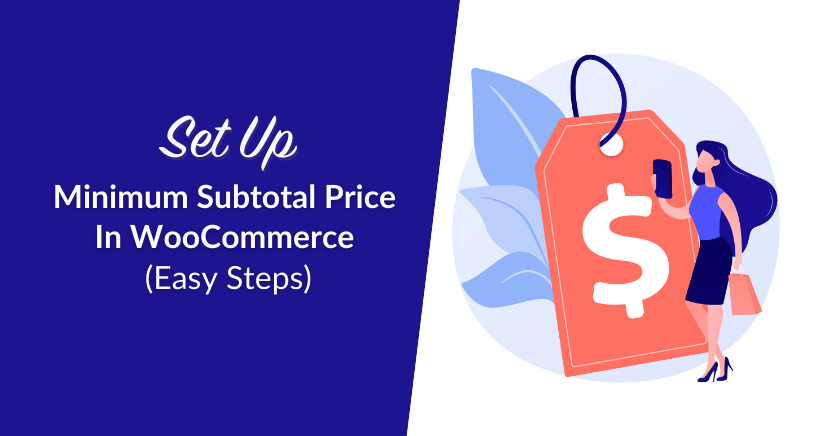
Frequently Asked Questions
We hope the above discussion helped you determine your product’s retail and wholesale rates. Now, we’d like to answer a few other questions about pricing model strategies.
Does “wholesale” mean cheap?
No, wholesale does not just mean cheap. Wholesale price is the sum or amount of money for which products or services are offered for sale to business buyers who are purchasing in larger volumes. Purchasing at wholesale describes the sale of goods in quantity for resale.
What is the difference between wholesale price vs. retail price?
Wholesale rates are discounted pricing available to business customers willing to purchase large amounts of goods. On the other hand, retail prices are what individual consumers pay for products sold in smaller quantities.
Is the wholesale price half of the retail price?
Setting a wholesale rate solely by applying a 50% discount to the retail price is an inadequate approach. This is especially true if you don’t consider other crucial factors such as cost structures and market intelligence. Avoid this simplistic method as it disregards essential business aspects and increases the risk of incurring losses rather than generating profits.
What is the minimum advertised price?
The minimum advertised price is the lowest price a retailer can advertise a manufacturer’s product.
Typically, it’s not legally permissible to restrict the price your wholesale customers sell your products for. However, in most countries, you can legally implement an agreement that restricts the minimum price at which they can advertise your products. Establishing a minimum advertised price can prevent excessive competition among your wholesale customers and maintain a sustainable market for re-orders.
Take a look at the promotions at retail locations near you. You’ll often find marketing campaigns making statements such as “Too hot to advertise, call for pricing!” This indicates that there are likely contractual limitations on advertising the product at excessively low prices.
How can I monitor the impact of my wholesale rate pricing strategy on customer satisfaction?
One effective way to gauge the effectiveness of your wholesale pricing model is to collect feedback directly from your wholesale customers. You can do this by conducting surveys or gathering customer reviews.
Likewise, it’s crucial to assess key performance metrics to evaluate the impact of your pricing strategy. Key metrics include order value, order frequency, and customer retention rates. By tracking these metrics over time, you can measure the effectiveness of your wholesale rate and make informed decisions to optimize it.
Should I offer different tiers for wholesale prices?
Offering different pricing tiers to different customer segments can be a strategic approach to help you acquire new customers or foster loyalty from existing ones. To design effective pricing tiers, assess key factors such as order volume, frequency, and customer relationship. For example, you can offer a special wholesale rate for customers who consistently place large orders or have a long-standing partnership with your business.
One way to implement customized pricing tiers on your wholesale store is by utilizing powerful plugins like Wholesale Prices Premium. This tool allows you to set up different wholesale customer roles and assign pricing rules to each role. By segmenting your customers into distinct groups, you can provide tailored wholesale rates based on their purchase behaviors and commitment levels.
Related Articles
At Wholesale Suite, we offer many resources to help your wholesale business succeed! Want to learn more about setting wholesale prices? Check out some related articles below:
- How To Optimize Your Pricing Model Strategy To Grow Your Wholesale Business
- How To Set Wholesale Pricing Discounts On WooCommerce
- Using Discount Rules For WooCommerce To Create Irresistible Wholesale Deals
- How To Set Percentage-Based Wholesale Pricing On Products (3 Ways)
- Pricing Strategies For Wholesalers: A Complete Guide
- How To Implement Effective WooCommerce Discounts To Drive Sales
- How To Use WooCommerce Quantity Discounts To Grow Your Wholesale Business
Conclusion
We hope this article has helped you determine the ideal wholesale rate for your business! As we’ve shown you, there are many different approaches to calculating wholesale prices from retail prices. Ultimately, your method of choice completely depends on your business, market, positioning, plans, and more.
To recap, you can calculate the wholesale rate from the retail rate using the following four methods:
To further assist you in making an informed decision about the right strategy to use, we’ve also provided the following key factors you can evaluate:
Do you have any questions about setting your business’s ideal wholesale rate? Let us know in the comments section below!

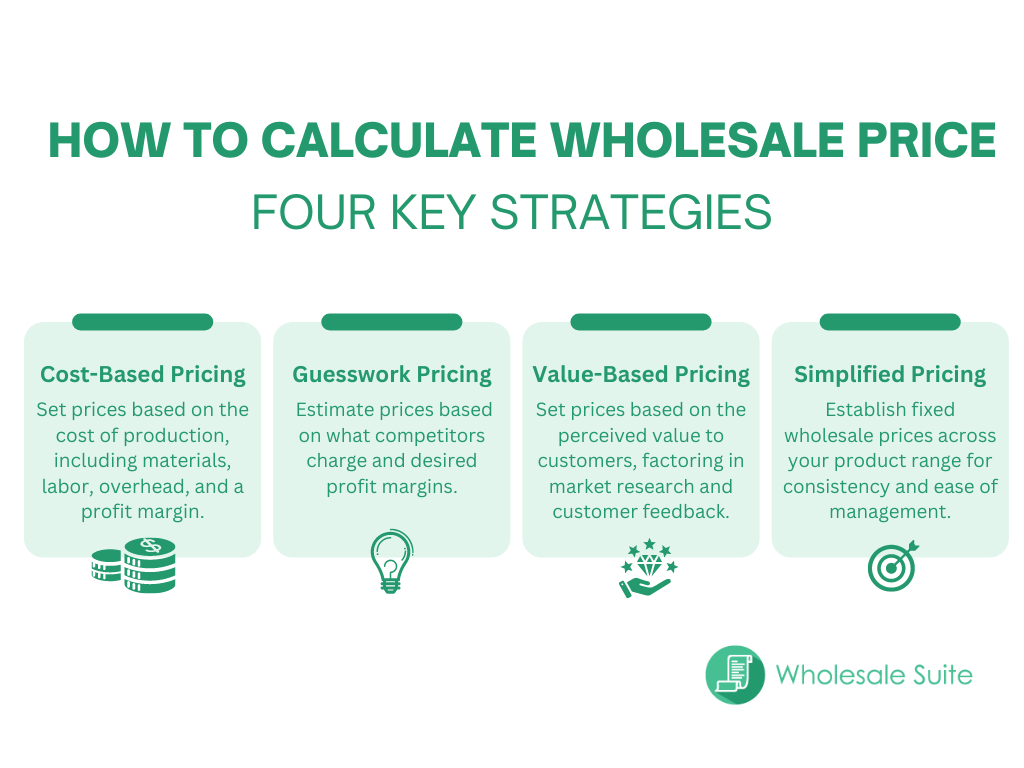
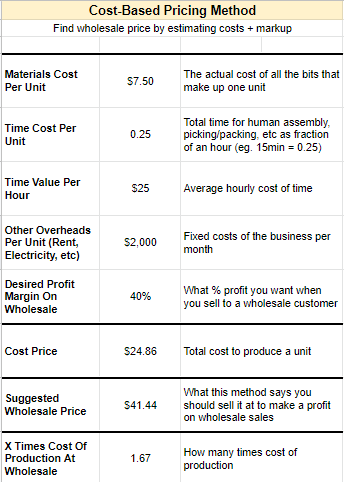
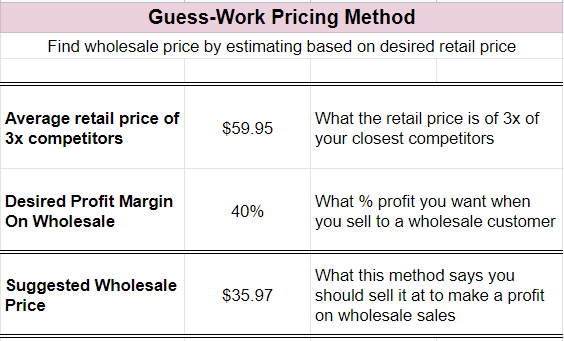
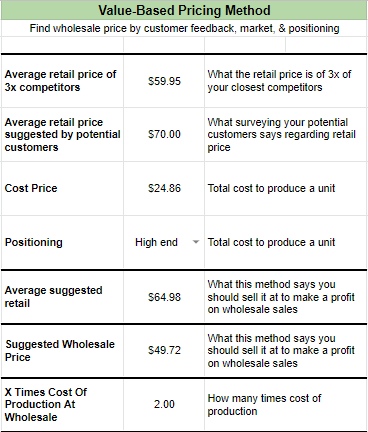
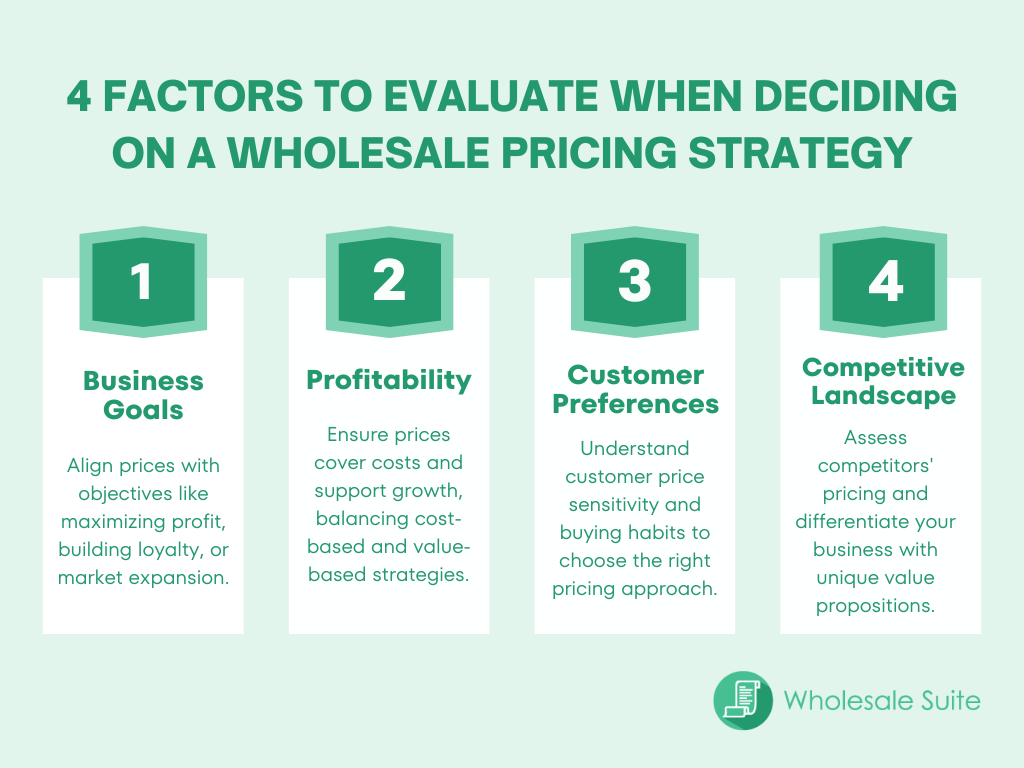
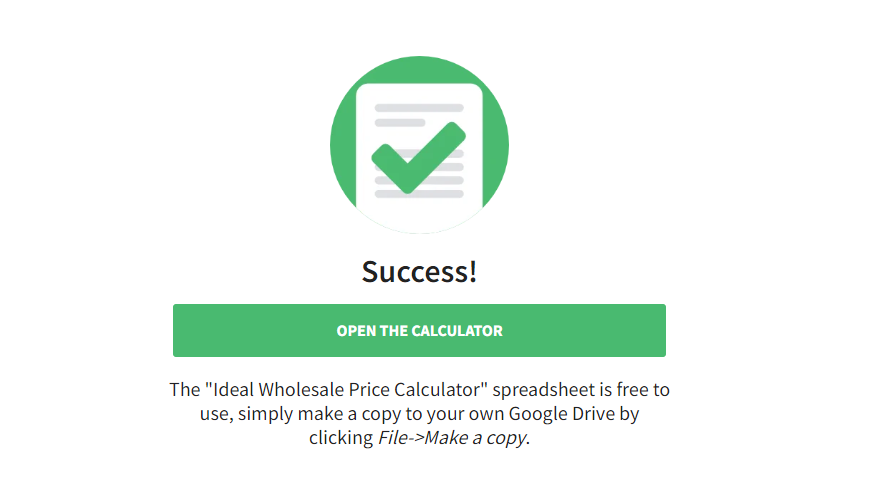

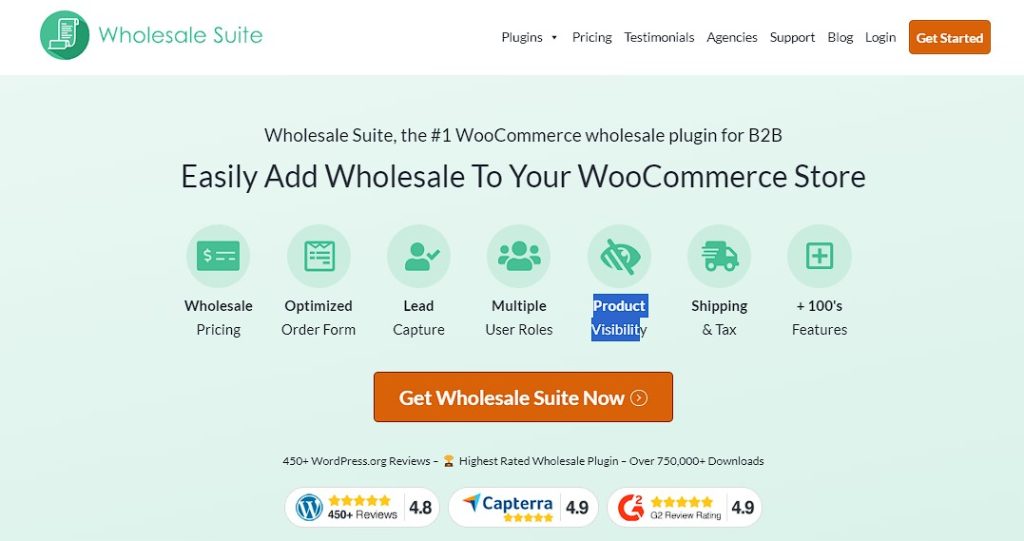

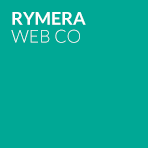

Hi
Very good article. I found it very enlightening. How would you convince a business to implement minimum order quantities. I have a client that his business is strictly based on the amount spent regardless of quantities. This makes it quite challenging to say the least when implementing wholesale rules and associated discounts.
Thanks for the article.
Lyse
Hi Lyse, thanks for the kind words!
For this I’d personally be looking at implementing a Minimum Order Subtotal restrictions for each order. You could also tier the min subtotals with multiple wholesale roles if there are smaller/larger customer groups.
Oftentimes customers who are short on the order target will order just that little bit more to ensure they hit that target and get the wholesale pricing so maybe what you could do is:
“how many times an average wholesale customer in this tier orders each month” x “the average order size” + another 10-20% on top of that as your minimum order subtotal
This should also have the effect of subtly pushing them to place bigger orders but not so much that they can’t stretch to reach the order size.
You’ll need to monitor and adjust of course, but hopefully this is a good starting point!
I have a small business that just started up this year. I just got the opportunity to become a wholesaler for this company. Should I get them to sign a contract with me or just treat them like I would any of my other customers on a sale by sale basis, but charge them the wholesale pricing?
Great question Marie and congrats on scoring your first wholesale customer!
There’s no right or wrong way to do it. What people do varies greatly. In this situation, I’m guessing you’ll mostly be wanting to learn. I’m a fan of keeping things pretty simple in the early days. Assign them some favourable wholesale pricing, give them an account and ask them to order. If you want you can get them to sign a wholesale contract later, but there’s probably no reason to go to the expense of drafting something like that when you only have one wholesale customer.
I hope this helps!
Hello
Thank you for sharing this article. I have a question regarding the margin a company is asking me for my product. They are asking they want a 40% margin, does that mean I take 40% off my retail cost correct? What’s the ebst way to find out if this viable for me and not lose on this deal. If at even 40% less I’m still getting double what I spent to do it, is that an ok thing? And maybe ask for a higher MQO?
thanks
Hey Mirko,
Usually that is 40% off retail. As mentioned in the article this is the typical “working backwards” kind of equation.
Things to consider would be your position in the market, how much margin you have on your retail, what you’d like them to be ordering as a minimum per order or per month and the volume they’d be able to do. Lots of factors as you can see and it’s highly personal to you and your business.
Take another read through the article above, especially the value-based pricing section. Hopefully, it might help you in your decision!
The good news, and the thing to remember, is you have someone there willing to buy. Set them up, get some orders through and if you aren’t happy you can always adjust your approach for your next wholesale customer :)
Hi!
Thank you very much for this article! it is clear and very usable.
One thing that surprised me was that you only have a 40% reduction on the retail price to get your wholesale price?
I have experienced that many retailers want a much greater discount with a mark-up on up to 3! so that means a 2/3 of the retail price… a discount on ex: 66 %
Any one who has the same experience?
P.S: I’m in the design business…
best,
// Else
Definitely depends on the niche, the 40% is just indicative and gave me something to work with on the article. It’s a pretty average sort of number for physical goods.
Hi Josh,
So are you saying that if a wholesale price is less than costs x 2 it’s just not viable? I have a small clothing business and have been doing alright for 2 years online and with a few ‘sale or return’ shops, but want to move on to wholesale. At the moment it seems I cannot price things for anything more than costs x 1.5. What do you think?
Fashion is an interesting area and markups vary wildly. Also varies a lot depending on where you are in the world too and what area of the market you are playing in (top end, low end, middle). I’d recommend touching base with some other fashion people in your general area/country that might be able to shed some insight.
I guess what I was hinting at with those general figures is to make sure you are comfortable with the margin and that you give yourself some breathing room, otherwise it limits the way you can promote deals to wholesale customers.
Hello I need help I’m starting a from home boutique and will be doing preorders. I will buying wholesale but need to have a good example of how to price my items.. one of the things is I’m buying a certain item it’s a 6 pack item my wholesale price would be $60.. and on the side it says suggested retail $120. So does that mean if I’m reselling the 6 pack item together to sell it at $120 or around $120 price.. supossable each item would as low as $7.50 each… also how muy should I price each item if I wanted to sell each of the item individually and also how much price if I wanted to resell the 6pack item as a wholesale. I woul appreciate if someone could help me out with the pricing thanks.
Wholesale $60
Suggested retail $120
Great article. This is a bit off-topic, but how different should pricing be for drop-shipping compared with wholesaling?
Really depends on your margins Deborah, if you are dropshipping on behalf of your customers they probably need to be prepared to soak up the shipping costs and I would give them less margin to cater for the packing and handling. Sending stock to a wholesale customer is very different to sending a small order to an end-customer on behalf of someone else.
Great Article.
Please, advice me about an average profit margin for a supermarket? (outdoor/BBQ product section)
I am planing offer my product to be sale in a supermarkets, and try to determine a reasonable a MSRP price.
My COGM price is around $1.00
Obviously, the price will be determined by quantities purchased.
Thanks
Great article! Really helpful.
I have a question. I have variety of candles in different fragrances. Each fragrance costs a different price to produce. How would you recommend pricing each product for wholesale? 1) Would you have a different wholesale price for each fragrance based on the cost. 2) Or would you find a medium so that the wholesale price is the same for each of the line items?
Would be a big help.
Thanks
Hi Ollie,
Personally I would be wary of setting wholesale pricing across the board (though in some cases this can work because it reduced pricing overhead). If each product has a wide variation of cost then you need to be accounting for that to make sure you’re making your desired profit at the wholesale level.
Hope this helps!
Cheers,
Josh
Hi josh i find your article really helpful im a mom and i started a small buisness for selling magnetic toys i dont have much information about retailing and whole sales do you recommend certain books or anyother way for me to know better about how to grow my small buisness….i have decided to put my retail price x2 profit although my product is a very good quality and people are happy with it ..for one reason ..is that i needed this product before in a suitable price in the market but I couldn’t find it so I decided to offer a good quality with suitable price for all people is that a good way of thinking or im thinking wrong ..
Hi, this was very helpful.. I have my first opportunity on whole sale. I’m trying to figure out how to do it. I sell cotton candy and I sell my containers for $8 for a 32oz. I’m trying to figure out how should I do this wholesale price. Helpppppp
Hey Delania,
Definitely try our wholesale pricing calculator (it’s free): https://campaigns.wholesalesuiteplugin.com/c/btstvnjzbtghsra6tjtw/
I would like info on buying jewelry at wholesale. Can you tell me what is the % off the retail price I should ask for but expect? Should I pay COD or ask for 30 or 60 days terms? My business is on-line.
Thanks,
Please guide me I am the distibutor of my company related to kitchen market and the challenge in this market is price. People sell it at 1 or 2 % margins to brake the market. But my product is of high quality and other products are also available with high quality but it’s getting difficult to place my products in retail counters they say it costly my margin for retails is 10 and wholesale is 5 I think I can’t go less than that.।।।
Hi I need help.
I currently sell my item for $99 It costs me $40 to make, good for me I’m making $59 per item. But i have a person wanting to buy the item wholesale, but they say they need to be low enough wholesale to be able to still profit when sold at 20% off. so just working this out, if they sold them for $99 less 20% off =$79.20 so i need to sell them to them somewhere between my $40 and their $79. If you say i should sell wholesale for My $40 x 2 =$80. That’s already above there price. They are saying i should sell wholesale for 1/2 of Msrp Manufacturing suggested retail price which is roughly $50??? so that’s only $10 profit for me. We also have to take into account shipping to usa from Australia. How much do i sell them whole for??? I’m really confused.
Hey Susan, most retailers will expect around the 40% RRP mark, 50% off might be normal in some industries depending on the usual margins. I’m not sure what industry you’re in but it sounds a bit steep.
Keep in mind is what you’re comfortable selling for wholesale at so that you can do business profitably on each sale. It sounds like based on your numbers you’ll end up around $65-80 range where you’ll both be happy and you both make money. Try and get to a win-win scenario :)
On shipping, usually wholesaler pays shipping. They will take that into account. If they’re buying in AUD and selling in USD too, they’ll be making up profits on the exchange too.
I hope this helps!
Hi! At how many pieces should wholesale start? And should the price be wholesale only for one design and color? Some shop was interested in my handmade embroidered tarot pouches, which i sell for 45.-, I am not sure how many the shop should buy for what percentage off
Hi Nathalie, first congrats on the wholesale interest on your products! Very exciting.
What would make it profitable for you and the customer in terms of minimum amount? If you set the min per product, consider over what time period they would be able to move those pieces and you could expect a re-order.
Should it be for only one design and color? What would you expect if you were the customer? Typically retail stores would want variety to offer their customers, especially with handmade items (what catches my fancy might not catch yours).
Make sure whatever pricing you set, you are profitable on each item. Don’t forget to add back shipping, etc as the wholesale customer should be the one paying this.
Hope this helps!
Hi Josh,
We really need help. We are a wholesaler.
The recommended retail price for our products is $15. Minus GST this works out to $13.35.
Our customers want a 50% profit margin on the wholesale price (not the retail price).
What should our wholesale price be? Is there a formula for this that we can apply to all of our products, focusing on the 50% profit margin of the wholesale price?
Thank you so much!
Hi Sasha,
Definitely recommend checking out our wholesale price calculator (its free) which will help you a lot with the formulas.